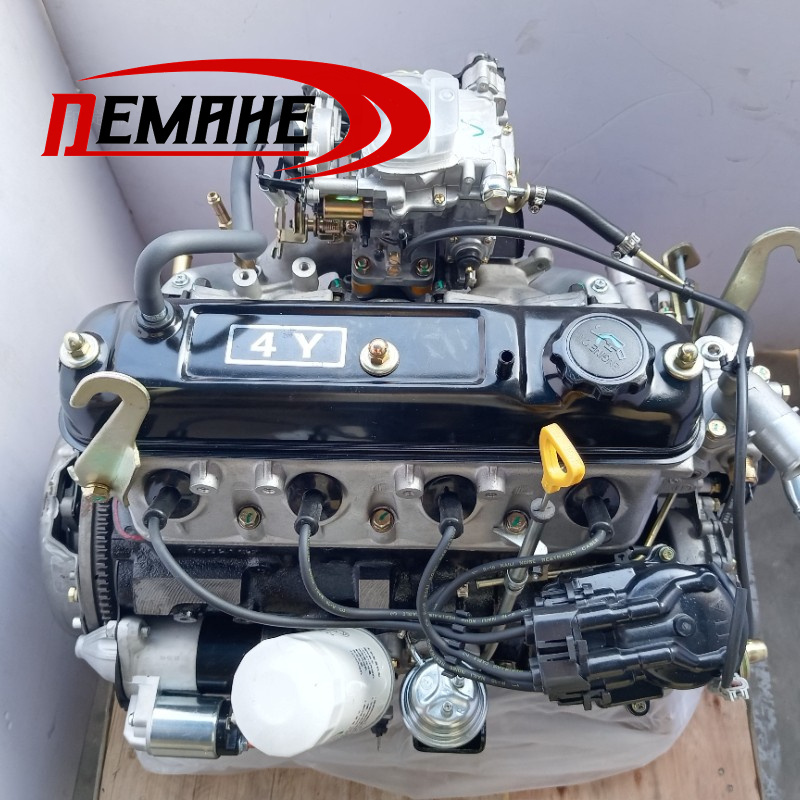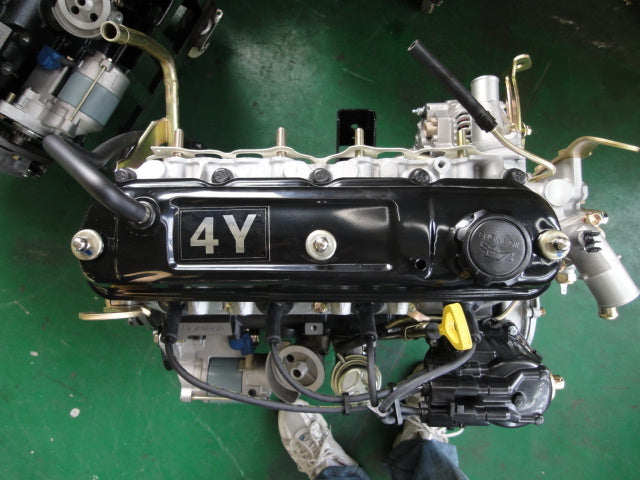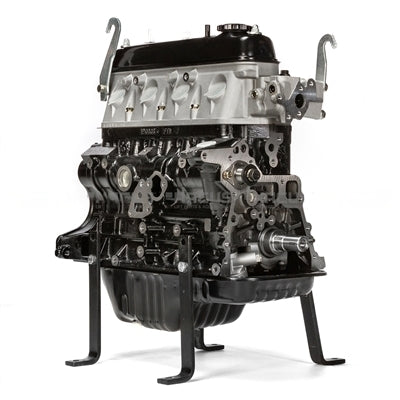How to Troubleshoot Common Issues with the 4Y Engine
How to Troubleshoot Common Issues with the 4Y Engine
Blog Article
The Ultimate Overview to the Engine: Key Insights for Every Car Enthusiast
Recognizing the engine is fundamental for any kind of automobile fanatic, as it acts as the heart of the vehicle and dictates its efficiency. This guide provides a comprehensive evaluation of engine anatomy, kinds, and the auto mechanics behind their operation, including the innovative modern technologies that are improving the automotive landscape. It emphasizes the essential nature of upkeep methods that can dramatically influence an engine's lifespan. Nonetheless, the intricacies of engine dynamics and the most recent developments in technology existing questions that warrant further expedition. What might these insights reveal concerning the future of automobile design?
Composition of an Engine
Recognizing the composition of an engine is critical for any auto enthusiast wanting to dive deeper into automotive auto mechanics. An internal combustion engine primarily contains several vital elements that operate in unison to transform gas right into power.
At the heart of this system exists the cyndrical tube block, which houses the cyndrical tubes where burning takes place. Piston motion within these cylinders is promoted by the crankshaft, which translates linear activity right into rotational power. In addition, the camshaft plays a crucial role in managing the opening and closing of the engine's shutoffs, guaranteeing correct air-fuel blend consumption and exhaust gas expulsion.
Other important parts include the gas system, which supplies the engine with the essential fuel, and the ignition system, in charge of initiating burning - 4y engine. The air conditioning and lubrication systems are likewise indispensable, keeping ideal operating temperatures and lowering friction, specifically
Engine Kinds and Configurations
A varied series of engine types and setups exists, each offering special advantages and drawbacks customized to various driving requirements and preferences. One of the most usual engine types consist of inline, V, flat, and rotary setups.
Inline engines, including cylinders organized in a single line, are known for their simpleness and efficiency. They are often located in portable automobiles, using an equilibrium of power and economy. V engines, defined by their 2 banks of cyndrical tubes arranged in a V shape, supply greater efficiency and smoother operation, making them popular in sports and luxury vehicles.
Flat engines, or fighter engines, have flat opposed cyndrical tubes, which add to a lower center of mass, enhancing automobile stability. These are frequently seen in brand names like Subaru and Porsche.
Rotary engines, although less typical, use a special style with a triangular blades and offer high power-to-weight ratios. They master lightweight and portable applications, mostly seen in Mazda automobiles.
Each engine type serves particular performance attributes, weight distributions, and gas performances, making sure that vehicle lovers can pick the right engine configuration to match their driving design and vehicle requirements.

How Engines Work
Engines, no matter their kind or configuration, operate basic principles that control their efficiency and efficiency. At their core, engines convert gas into mechanical power through a collection of regulated explosions or compressions. This process typically includes four main strokes: consumption, power, exhaust, and compression.
During the consumption stroke, the engine attracts in a combination of air and fuel. In the power stroke, a stimulate ignites the compressed combination (in fuel engines) or the mix fires up spontaneously (in diesel engines), resulting in a fast expansion of gases that pushes the piston down.
The performance of an engine is influenced by different aspects, consisting of the style of the combustion chamber, the kind of fuel used, and the precision of the engine's components. Comprehending these basic concepts is critical for cars and truck lovers that seek to value the complex mechanics behind their vehicles, along with for those aiming to my company improve efficiency through alterations and tuning.
Developments in Engine Technology
In recent times, developments in engine technology have dramatically changed the automobile landscape, boosting both efficiency and environmental sustainability. Among the most notable innovations is the growth of turbocharging and supercharging, which allows smaller sized engines to create greater power results without compromising fuel effectiveness. This has brought about an increase in the popularity of downsized engines, providing manufacturers with the capability to meet stringent emissions laws while keeping performance standards.
Additionally, crossbreed and electrical powertrains are reshaping the engine standard. Crossbreed systems incorporate internal combustion engines with electric motors, maximizing fuel usage and decreasing emissions. Completely electric automobiles (EVs) eliminate the burning engine completely, relying upon advanced battery innovation to supply instant torque and impressive velocity.
In addition, the here integration of synthetic intelligence and device learning in engine management systems permits real-time optimization of performance criteria, improving performance and responsiveness. Developments such as variable valve timing and straight fuel shot additionally fine-tune combustion processes, making best use of power result while lessening waste.
As the automobile industry remains to progress, these developments in engine modern technology will certainly play a critical function in forming the future of movement, focusing on both performance and sustainability.
Upkeep Tips for Enthusiasts
Preserving an engine is as vital as the developments that enhance its efficiency. Normal maintenance not just extends the life of your engine but likewise makes certain optimum performance. Beginning with regular oil modifications, complying with the maker's suggestions for oil kind and adjustment intervals. Tidy oil lubes engine elements properly, stopping deterioration.
Inspect and replace air filters regularly to make certain correct air movement, which is essential for burning performance. A clogged up air filter can lead to lowered performance and increased gas usage. Keep an eye on the coolant levels to avoid overheating, and change coolant according to the solution timetable. 4y engine.

Conclusion
In conclusion, a complete understanding of engine makeup, types, and auto mechanics is essential for automotive enthusiasts. Routine upkeep techniques, including oil changes and air filter checks, are essential for guaranteeing optimum engine capability and longevity.

Engines, regardless of their type or arrangement, operate on essential concepts that govern their efficiency and effectiveness. In the power stroke, a trigger stirs up the compressed blend (in fuel engines) or the combination stirs up automatically (in diesel engines), resulting in a quick growth of gases that pushes the piston down.In recent years, advancements in engine technology have actually significantly changed the auto landscape, boosting both performance and environmental sustainability.
Report this page